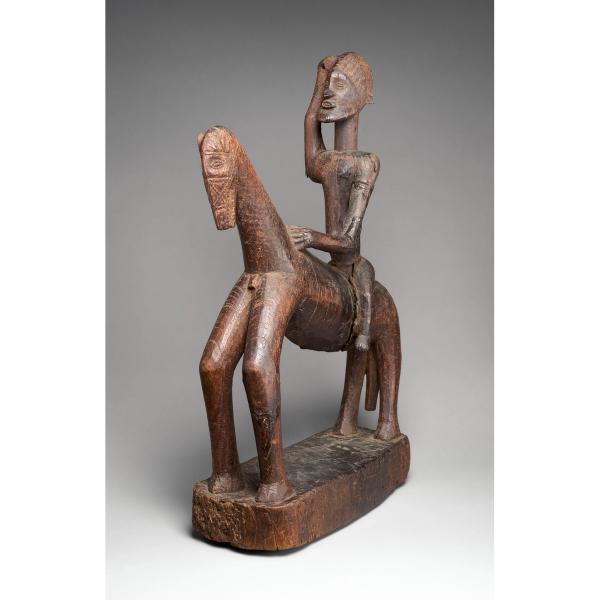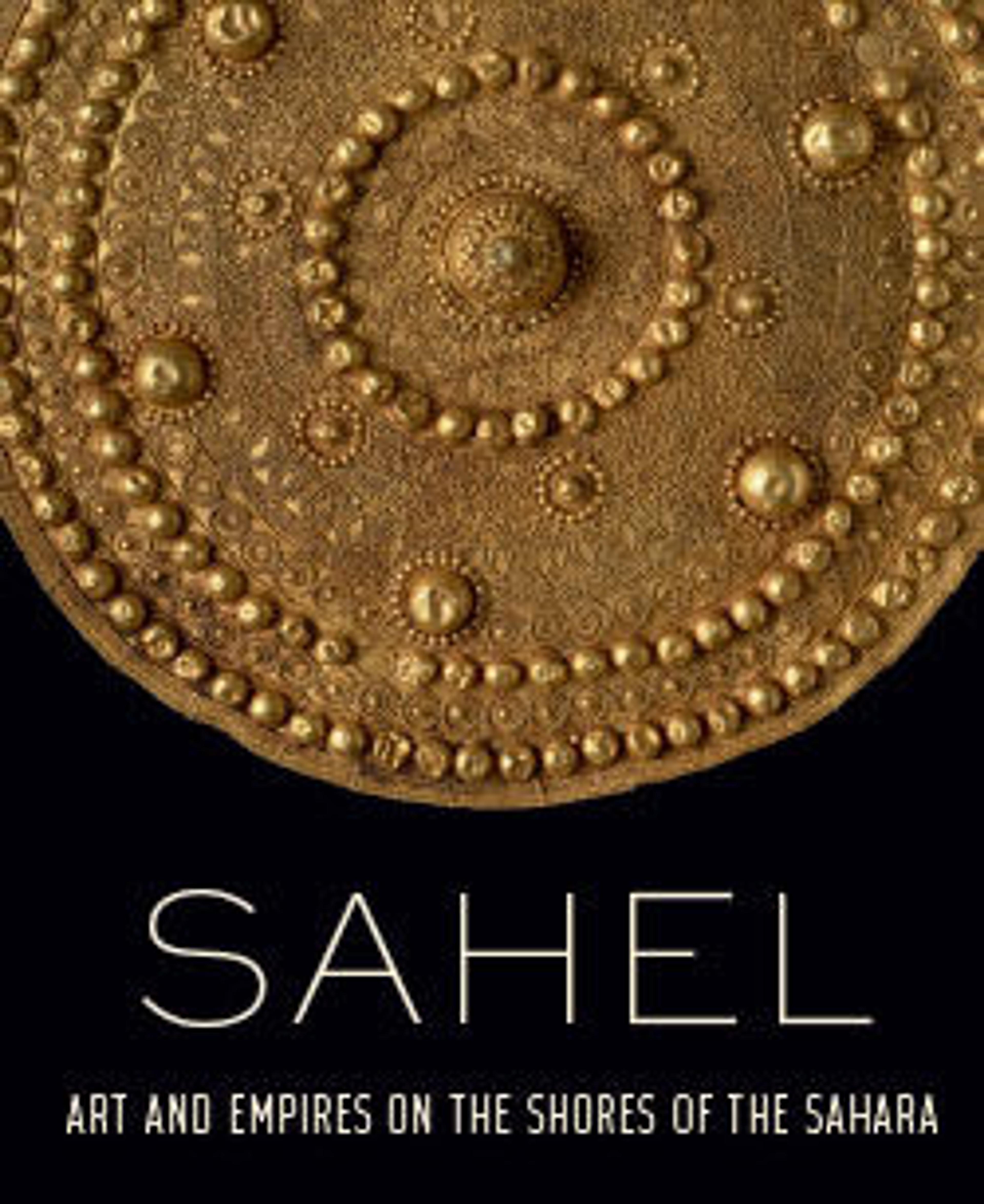Equestrian
Artwork Details
- Title: Equestrian
- Artist: Dogon blacksmith
- Date: 16th–18th century
- Geography: Mali
- Culture: Dogon peoples
- Medium: Wood, metal
- Dimensions: H. 27 1/2 in. × W. 7 in. × D. 16 3/4 in. (69.9 × 17.8 × 42.5 cm)
- Classification: Wood-Sculpture
- Credit Line: The Michael C. Rockefeller Memorial Collection, Bequest of Nelson A. Rockefeller, 1979
- Object Number: 1979.206.85
- Curatorial Department: The Michael C. Rockefeller Wing
Audio

1533. Equestrian, Dogon blacksmith
Samuel Sidibé
SAMUEL SIDIBÉ (English translation): The way the sculptor focuses on the details of both the horse and the figure, to me, shows the work of a great master of sculpture.
ANGELIQUE KIDJO (NARRATOR): The artist responsible for this work ingeniously unified a man and his horse. The striking figure and his mount almost merge into a single entity.
This subject is both one that is spiritual and one that addresses the history of the regions’ great empires.
Samuel Sidibé, former director of the National Museum of Mali.
SAMUEL SIDIBÉ (English translation): Clearly, he’s a significant figure in society.
In Africa, older men often have this beard, which they cultivate as a sign of respectability and greatness.
When you see the left arm raised, you can see something is broken—he probably held a spear. So, in this position of a warrior or perhaps a hunter, he’s ready to throw his weapon at the enemy or at an animal.
Owning a horse is not something everyone can do. So, it’s a symbol of power, luxury, and in a way, an animal that commands respect, as it helps men participate in combat when it comes to defending the community.
ANGELIQUE KIDJO: This figure takes on new meanings when it enters the museum.
SAMUEL SIDIBÉ (English translation): The significance of a museum exhibiting such an object is to honor the culture, but also to help visitors understand the context of these objects and appreciate the high value of the cultures they represent. The promotion of cultural diversity is a global issue of extraordinary importance today. When museums promote tolerance and diversity, they contribute to reinforcing our shared humanity.
More Artwork
Research Resources
The Met provides unparalleled resources for research and welcomes an international community of students and scholars. The Met's Open Access API is where creators and researchers can connect to the The Met collection. Open Access data and public domain images are available for unrestricted commercial and noncommercial use without permission or fee.
To request images under copyright and other restrictions, please use this Image Request form.
Feedback
We continue to research and examine historical and cultural context for objects in The Met collection. If you have comments or questions about this object record, please complete and submit this form. The Museum looks forward to receiving your comments.
